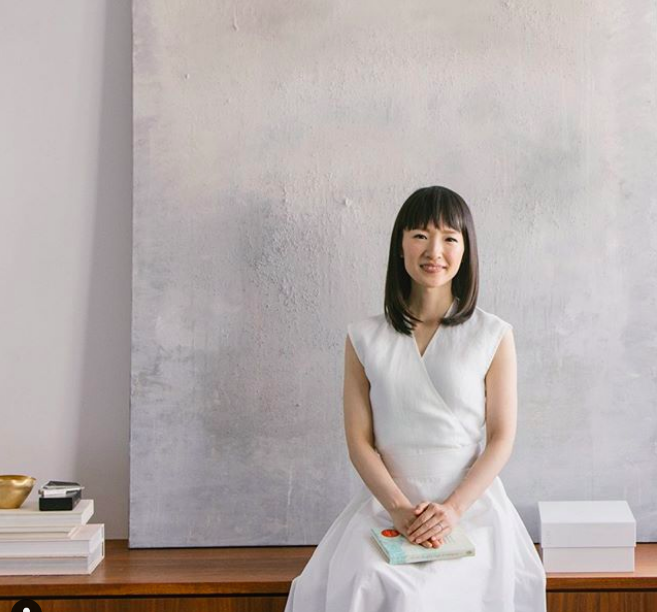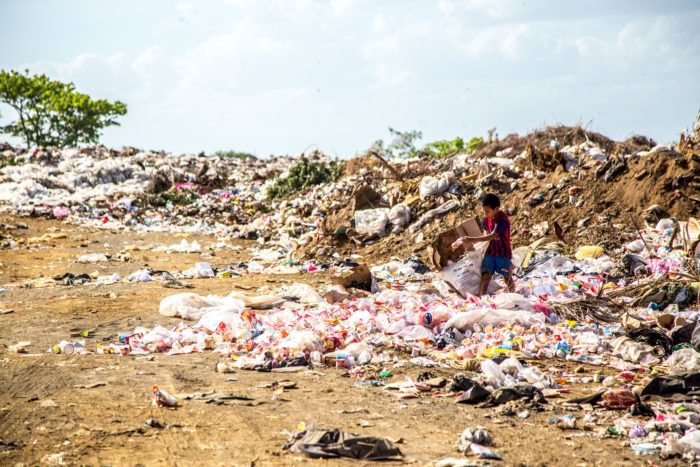 If you have a Netflix subscription, you might have seen the reality TV show Tidying Up With Marie Kondo. This series follows Japanese organizer and spiritual guru Marie Kondo as she teaches American families how to tidy and organize their homes. The show is the complete antithesis to Western consumerist culture, which teaches us to accumulate items with little regard for their personal value—their ability to spark joy. Unfortunately, sparking joy also creates a lot of trash.
If you have a Netflix subscription, you might have seen the reality TV show Tidying Up With Marie Kondo. This series follows Japanese organizer and spiritual guru Marie Kondo as she teaches American families how to tidy and organize their homes. The show is the complete antithesis to Western consumerist culture, which teaches us to accumulate items with little regard for their personal value—their ability to spark joy. Unfortunately, sparking joy also creates a lot of trash.
Instead, Tidying Up teaches us to value items inherently for how they are used, or what memories or physical responses they invoke. Kondo wants Americans to respect their belongings, to only keep what we really want and need.
The phenomenon of Tidying has caught on, as more families clean out and organize closets and attics, drawers and file cabinets. If this turns out to be a long-term trend, the effect on the Earth will be a positive one, as more people reduce their consumption of single-use plastics and other wasteful products. However, the current prospects are grim, as hundreds of pounds of unwanted clothing, plastics, and other trash are filling up recycling centers and landfills alike.
There are smart ways to tidy. Ones that reduce our impact on the planet, and help our homes become spiritually clean and organized places.

A boy wanders an island of trash in Nicaragua.
We can start by considering what we consume in the first place:
Are you buying single-use plastics, such as plates and forks, or disposable water bottles? Are your cleaning supplies Earth-friendly? These are all easy places to start researching green alternatives. Many lifestyle articles on Peaceful Dumpling share awesome tips on green-living, including tips for finding vegan cleaning products.
Though green products cost more on the front-end, it’s also easy to make your own cleaning products at home out of little more than common household goods, often for an end cost of pennies per use. These can then be stored in reused plastic bottles, bins, or any other single-use item that’s found its way into your home.
Avoid buying plastic, period. Whether it’s in a water bottle, polyester pantsuit, or food-storage container, start trying to avoid plastic a little at a time. This product is the number one pollutant in our oceans and usually doesn’t last nearly as long as an item made from glass or metal. There are plenty of great places online to research living a plastic-free life if you are able to do so. Even if you are unable to get rid of plastic totally, consider eco-friendly options when available. It doesn’t need to be difficult, and since many natural recipes are food-safe, they can be a fun experiment with the kids when it’s super hot outside.
When you are tidying, reconsider just donating everything:
Even donating items has its cons, as big-name donation centers like Goodwill and the Salvation Army have seen donations rise over 20 percent in the last year. Donating big trash bags of unwearable clothes or other worthless items costs the nonprofits money and time. When I worked at a local nonprofit for two years, our thrift store was overrun with trash bags of “donated” clothes, often too stained or torn to sell. Around 11% of these unwanted items end up going to landfills, regardless of your intention.
So what do we do with junk, all that junk inside that trunk?
“One man’s junk, another man’s treasure” is an idiom I’ve lived by all my life. Not only is reusing items greener, but it also saves you a lot of money. For example, old t-shirts can be made into cleaning rags and even mop-heads or used as hair towels. Painted metal and plastic coffee canisters can be used for storage. If you’re feeling particularly crafty, two-liter bottles can become flower pots. The great thing about plastic is that it’s endlessly useful. Even the tiniest shards can be molded together to form whole houses, as one Colombian company is doing.
Of course, not all of us can start engineering housing structures made from water bottles. But, if we all make a few small changes to how we view items and packaging, waste and usefulness, we may be able to save our planet.
Interestingly, the best place to look for guidance in the art of reusing and up-cycling, are the developing nations left to deal with the waste we leave behind. And in the age of the internet, it’s easy to learn how to make small, simple changes to your daily routine. These might seem like drops in the vast ocean when it comes to climate change, but our whole system is interconnected. What you and I do affects everyone else and the world around us. By making these simple changes to an already Earth-conscious movement, we would be able to avoid turning the beauty and synchrony of Marie Kondo’s art into another American Horror Story.
__
Photo: Marie Kondo via Instagram; Hermes Rivera




